MATTHEW KLUBER
Matthew Kluber’s work, entitled “Firewire Pictures,” explores the intersection of digital technology and painting. He is interested in the point where the virtual world (new media) meets the physical world (traditional media). He attaches the ephemeral, un-located space of digital video to fixed, painted compositions by projecting layers of video and motion graphics onto large-scale paintings. What results is a hybrid visual medium, in which a new pictorial and color space is revealed. The images, both still and moving (as in video) beautifully offer a new, complex geometrical imagery that combines technology with the traditional object of a painting.
-
Half Day Closing
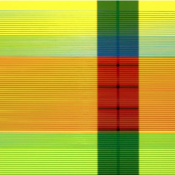 add to drawer
add to drawer
-
Humm (night studio)
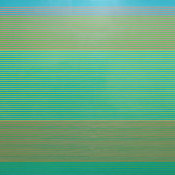 add to drawer
add to drawer
-
No Place Like Utopia
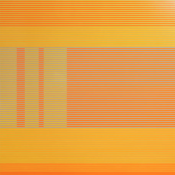 add to drawer
add to drawer
-
Field/Terrace (blue)
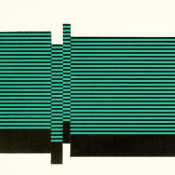 add to drawer
add to drawer
-
Field/Terrace (med. red)
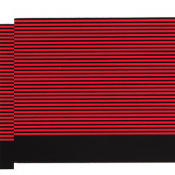 add to drawer
add to drawer
-
Field/Terrace (finches gold)
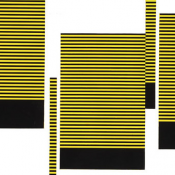 add to drawer
add to drawer
This work investigates the intersection of painting and digital technology, locating itself at the point where the physical world (traditional media) meets the virtual world (new media). At this intersection the ephemeral, un-located space of digital video is attached, by means of projection, to the fixed object of a painting, illuminating it with a new color space, code-derived content, and the element of time to construct a hybrid pictorial space.
The paintings are composed of linear, geometric elements that reference the narrow, colorful, horizontal bands of data - signaling a crash - that had frequently filled the screen of my (former) computer. This downside of digital technology, its flaws and defects, provided a unique visual experience and became an unexpected, rich source of imagery. The thin horizontal stripes refer to that imploding data, while the picture plane alludes to the computer screen – resulting in a carefully edited version of a visual phenomenon normally associated with the breakdown of a system.
The projections involve an innovative use of both hardware and software by:
a). Recontextualizing the use of hardware (digital projector) by transforming it into a painting tool. The carefully manipulated light of the projector upon the surface of the painting creates a new, hybrid color space. This new color space is the combination of subtractive color, the way we view a traditional painting, and of additive color, the mixture of red, blue and green light of the digital projector.
b). The projections are created with custom software written in C++ and Open GL, a powerful graphics tool used primarily to create video games. This software allows me to accomplish a wide range creative functions such as: the ability to crop the area of the projection to fit the exact dimensions of a painting, to manipulate the timing and fading of the projector; and to play multiple layers of video and motion graphics in specific areas of a painting. Additionally, encoded variables ensure that certain layers of imagery never play the same way twice. These layered, time-based, projections become painterly, cinematographic effects that animate and extend the surface of the paintings.
Reference points for this work come from my interest in the historic changes brought about in art by the social and cultural upheavals and rapid developments in science and technology in the 1960’s and 70’s. These changes compelled a new generation of artists to address emotional disengagement, formal rigor, and anonymity of authorship in order to escape the art that had reached its height of influence in the form of Abstract Expressionism. In particular, I have had a long interest in the color-field painters Kenneth Noland, Gene Davis and Morris Louis; as well as light and space artists James Turrell, Robert Irwin, Doug Wheeler and Dan Flavin. They sought to dematerialize the art object; their work diffused the luminous effect of color so that the boundaries of the frame and material substance seemed almost incidental to the perceived intensities of continuous color and light sensation.
